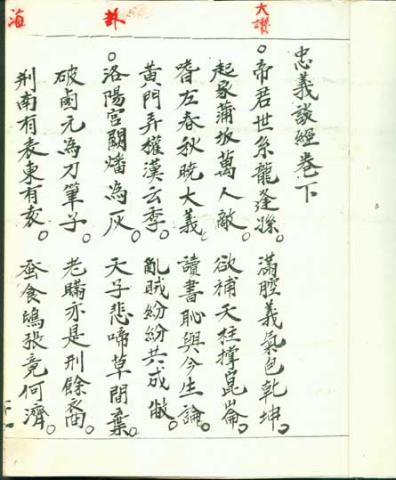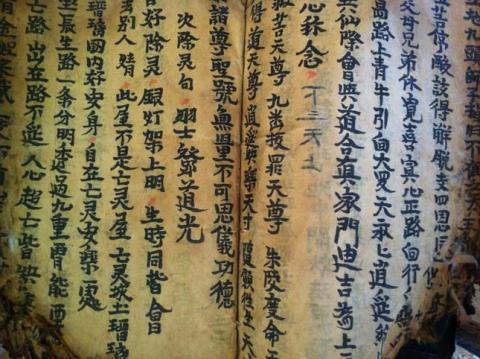Aims and objectives
Amdo is a region located in the northeastern area of the Tibetan Plateau. Due to its geographical features of high mountain ranges and vast grasslands, fragmented and scattered institutions of local power have been the prevalent forms of the ruling agency, until its formal inclusion in the administrative system of People’s Republic of China in 1958.
In this socio-historical context, Ngakpa have been playing a leading role in the religious life of Amdo Tibetan communities, embodying a sort of independent channel of transmission, alternative to monastic practice. Ngakpa are extremely knowledgeable bearers of the non-monastic tradition of Tibetan Buddhism and Bon religions. They mainly act as ritual masters for a number of different purposes and have a high level of expertise in Tibetan meditation practices, medicine, astronomy and traditional knowledge as a whole.
Despite the recent popularity of Ngakpa teachings in the Western world, their survival in the original context is threatened by the increasing marginalisation of their social role and the lack of potential students in the young generation, captivated by new opportunities offered by the Chinese fast-growing economy.
The preservation of Ngakpa’s textual heritage is a factor of primary importance for ensuring the perpetuation of this ancient laic tradition of Tibetan Buddhism. This project will be exclusively concerned with the preservation of the most endangered manuscripts of one specific group of Ngakpa in the Amdo region, those belonging to the Nyingmapa tradition, the most ancient school of Tibetan Buddhism.
Last year, a pilot survey was carried out by the local archival partner and it emerged that between 70 and 100 pecha (the traditional format of Tibetan books, made of long paper pages compressed between two wooden boards and bounded together with a string) of different lengths, privately-owned by thirty Ngakpa, are in very poor physical condition and are situated in precarious locations, exposed to the damages of humidity, rats, use and age.
The manuscripts date from between the early 19th and the end of the 20th centuries. Several of them are unique copies that were rescued during the Cultural Revolution (1966-1976), when they were hidden in various provisional locations, wedged in wall fissures and buried underground.
The topics covered by the texts are heterogeneous: rituals, medicine, history, astrology, astronomy, divination, hagiography, mantras, manuals for the construction of traditional ritual objects, such as mandala, stupa and torma (decorated and painted offerings made of barley flour and butter).
The scattered location of the texts and the difficulty to reach them in remote mountain areas requires extensive travel among different villages in Huangnan Tibetan Autonomous Prefecture, Haixi Mongolian and Tibetan Autonomous Prefecture, Hainan Tibetan Autonomous Prefecture, Golok Tibetan Autonomous Prefecture (all in Qinghai Province) and Southern Gansu Province. This project aims to digitise all these manuscripts.
The local archival partner is especially qualified to ensure the sustainability of the project. The founder and director of the Qinghai Buddhist Culture Research Center, Mr Hong Qi, has been working with the Ngakpa community of Amdo since 2002 and has published over forty books on the history, lineages and culture of the Ngakpa community in Qinghai and Gansu provinces of PRC. Being a Ngakpa himself, Mr Hong Qi is trusted by the Ngakpa community and the thirty Ngakpa involved in the project have already guaranteed accessibility to their manuscripts and are enthusiastic about the digitisation project.
Training for 10 young Ngakpa in practical aspects of preservation and digitisation issues will be organised in Xining.
Digital copies will be given to the Qinghai Province Library in Xining, China National Library in Beijing, Tibetology Research Centre in Beijing, the local archive partner library, the individuals who contributed their collections to the project, the British Library, and Ngakpa communities in Amdo. The digital collection will also be deposited with the “Tibetan eText Repository”, managed by the Tibetan Buddhist Resource Center.
The availability of this material to the wider academic world is of extreme importance, since major research has been focusing on Tibetan monastic tradition and a great amount of scholarship is devoted to Tibetan Buddhist philosophy. Comparatively, Ngakpa knowledge has been poorly studied and, with few exceptions, it has been neglected by academia. The digitisation of Amdo Ngakpa manuscripts will hopefully ease accessibility to original sources and foster more researchers’ interest in this important part of Tibetan religion and culture.
Outcomes
The project digitised texts of variable length, from a few pages to hundreds, which belong to four Ngakpa households and to the collection hosted at the Qinghai Province Buddhist Culture Research Centre in Xining. In total 184 texts (about 5000 images) were digitised. Most texts are rare unique ritual texts and date between late nineteenth Century and mid-twentieth Century. Three digital copies have been created and given to the British Library, the Tibetan Buddhist Research Center, and the local archive partner Qinghai Province Buddhist Culture Research Centre.
The records copied by this project have been catalogued as:
- EAP727/1 The texts (pecha) belonging to the Qinghai Province Buddhist Culture Research Centre
- EAP727/2 The texts (pecha) belonging to Lugge Household
- EAP727/3 The texts (pecha) belonging to Nyingjak Household
- EAP727/4 The texts (pecha) belonging to Sangyegya Household
- EAP727/5 The texts (pecha) belonging to Shabogya Household
- EAP727/6 The texts (pecha) belonging to Shampagya Household





